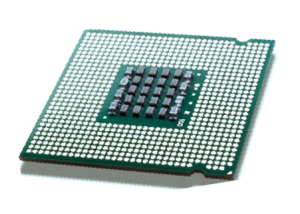
Microprocessors Overview: A Look at the Brains of the Computer
August 21 2023 
Inquiry
Global electronic component supplier AMPHEO PTY LTD: Rich inventory for one-stop shopping. Inquire easily, and receive fast, customized solutions and quotes.
QUICK RFQ
ADD TO RFQ LIST
Microprocessors are among the most crucial parts of contemporary electronic devices. They serve as the
What is Microprocessor?
Microprocessors are the core of a computer system and are responsible for processing unique instructions and processes. A microprocessor is made to carry out logical and computational tasks using common operations like addition and subtraction, interprocess and device communication, input/output management, etc. The number of transistors contained on an integrated circuit, which makes up a microprocessor, relies on the relative computing power of the device. Microprocessors are often categorized based on the number of instructions they can perform in a given amount of time, their clock speed measured in megahertz, and the number of bits needed per instruction.
Microprocessors Components
- Arithmetic logic unit(ALU): ALU is a computing device that executes both arithmetic and logical operations. Addition, subtraction, multiplication, and division are examples of arithmetic operations. Logical operations include NOR, AND, NAND, OR, XOR, NOT, and XNOR, among others.
- Control unit: The control unit generates signals that the other components use to operate and is used to control instructions.
- Register set: Registers make up the register array. General-purpose registers are those that are used by the programmer to store any type of data, whereas reserved registers are those that are not utilized by the programmer to store any data. The word length of the computer is referred to as the register length.
- Input-output devices: Data is transferred between microcomputers and external devices using input-output devices.
Video related to Microprocessors
History of Microprocessors
- First generation (1971–1973): The Intel 4004 and Motorola 6800 were examples of 4-bit processors from the first generation of microprocessors. They were a significant advancement in computer development even though they were somewhat slow and had few capabilities.
- Second generation (1974–1978): 8-bit processors like the Intel 8080 and Zilog Z80 made up the second generation of microprocessors. They started to be employed in a larger range of applications, including home computers and video games, and they were noticeably quicker and more potent than the previous generation of microprocessors.
- Third generation (1979–1985): The Motorola 68000 and Intel 8086 were two examples of third generation (16-bit) microprocessors. They were utilized in many different applications, including personal computers, workstations, and minicomputers. They were even quicker and more powerful than the second generation of microprocessors.
- Fourth generation (1986–1995): The Motorola 68030 and Intel 80386 were two examples of 32-bit processors from the fourth generation of microprocessors. They were utilized in a variety of applications, such as high-performance workstations, servers, and mainframes. They were even faster and more potent than the third generation of microprocessors.
- Fifth generation (1996–present): 64–bit processors, like the Intel Pentium and AMD Athlon, make up the fifth generation of microprocessors. They are the fastest and most potent microprocessors ever created, and a variety of devices, such as game consoles, high-end servers, and supercomputers, employ them.
Types of Microprocessors
Microprocessors can be classified into a wide variety of categories, each with a unique function. The most popular varieties are listed below:- General-purpose microprocessors: These microprocessors are the most prevalent kind. Personal computers, laptops, and servers are just a few of the many purposes for which they are made.
- Embedded microprocessors: These processors are intended for usage in a variety of different products, including automobiles, home appliances, and medical equipment. They are often more efficient and specialized than general-purpose microprocessors, but typically less powerful.
- Microcontrollers: A form of embedded microprocessor with a focus on compact, low-power devices, microcontrollers are utilized in many different types of devices. Embedded systems, sensors, and actuators are common examples of the types of equipment they are employed in.
- Digital signal processors (DSPs): Microprocessors known as digital signal processors (DSPs) are employed in applications that call for quick digital signal processing, such as the processing of audio and video.
- Graphics processing units (GPUs): GPUs are a class of microprocessor that are made for use in programs that demand quick graphics processing, such as computer games and computer-aided design (CAD).
How does a Microprocessor work?
Four steps can be used to categorize a microprocessor's basic operation:- Fetch: The microprocessor retrieves a memory location for an instruction.
- Decode: The instruction is broken down by the microprocessor, who then decides what to do with it.
- Execute: The instruction is carried out by the microprocessor.
- Writeback: When a microprocessor executes an instruction, the results are stored in memory.
How is a Microprocessor Different from an Integrated Circuit?
Although microprocessors are a subset of integrated circuits (ICs), not all ICs have them. A miniature electronic circuit that has been produced in one piece on a semiconductor chip is known as an integrated circuit (IC). Transistors, resistors, capacitors, and diodes make up its components. Computers, cellphones, and automobiles are just a few of the many electronic gadgets that use integrated circuits (ICs). A central processing unit (CPU)'s constituent parts are all found in a microprocessor, a form of integrated circuit (IC). The CPU is a computer's "brain," and it is in charge of processing commands and carrying out calculations. Computers, smartphones, and tablets are just a few of the many gadgets that require microprocessors. A microprocessor and an IC primarily differ in their complexity and use. In contrast to an IC, which is a more specialized device created to carry out certain operations, a microprocessor is a more complicated device created to carry out general-purpose computing tasks. The key differences between microprocessors and ICs are listed in the following table:| Feature | Microprocessor | Integrated Circuit (IC) |
| Purpose | General-purpose computing | Specific function |
| Complexity | More complex | Less complex |
| Examples | CPU, GPU, FPU | Memory, Logic gates, Amplifiers |
| Applications | Computers, smartphones, tablets | Cars, appliances, medical devices |
Is A CPU A Microprocessor?
Undoubtedly, a CPU is a microprocessor. An integrated circuit (IC) called an integrated microprocessor houses a central processing unit (CPU). The arithmetic logic unit (ALU), control unit, and registers are all on the same chip, which means that the entire CPU is contained within it. Computer intelligence is controlled by the CPU. Its job is to execute the commands that the computer needs to function. The CPU retrieves the instructions from memory and carries out each one individually after storing them there. Despite the fact that not all microprocessors are CPUs, a CPU is one of them. In other gadgets like embedded systems and microcontrollers, microprocessors can also be utilized. The following are some differences between CPUs and microprocessors:- Generally speaking, CPUs are more powerful than microprocessors. This is true because CPUs are made for general-purpose devices like servers and personal computers. Embedded systems and microcontrollers are two examples of applications for which microprocessors are often created.
- Microprocessors are less feature-rich than CPUs. This is due to the fact that CPUs must be able to handle a range of jobs. Because they are intended for particular jobs, microprocessors often have fewer functionalities.
- Microprocessors are less expensive than CPUs. This is as a result of the complexity and costlier component requirements of CPUs. Because they are simpler and utilise cheaper components, microprocessors are often less expensive.
The Future of Microprocessors
Microprocessors have a bright future. Microprocessors will grow much quicker, more potent, and more energy-efficient as technology advances. They will also get smaller and less expensive. In our daily lives, microprocessors already have a significant impact. As they grow more incorporated into our everyday electronics, they will play an even bigger role in the future.Conclusion
Microprocessors are one of the most important technologies of our time. They serve as the "brains" of several devices, including computers and cellphones. The way we live and work has been altered by microprocessors, and they will continue to be crucial to our future.Related Articles
- ·Stratix 10 VS Stratix V: Which FPGA is Right for Your Next Project?
- ·Intel Xeon Platinum 8454H vs AMD EPYC: Which Reigns Supreme?
- ·A Deep Dive into the AMD EPYC 4564P Processor
- ·MSP430F5438A vs MSP430F5529: A Detailed Analysis of Their Capabilities
- ·Comparing MSP430F6659 and MSP430F5419A: Which One is Right for Your Project?
- ·Exploring the Features of MSP430F5529 and MSP430F5638 Microcontrollers
- ·Demystifying 20 Microcontroller Projects for Beginners
- ·Unveiling the Ultimate Guide to Microcontroller Programming
- ·4680 Battery: Unveiling the Power Potential of the Next-Gen Cell
- ·Exploring the Case Studies on Arduino Applications
Populer Posts
MPC8272CZQPIEA
NXP Semiconductors
BCM58622BB0KF12G
Broadcom
SB80L186EB13
Intel
MCIMX7U5CVP06SD
NXP Semiconductors
MCIMX31CVMN4C
NXP Semiconductors
MPC8377EVRALG
Freescale Semiconductor, Inc. (NXP Semiconductors)
AM4376BZDND30
Texas Instruments
P2040NSN1KLB
NXP Semiconductors
MPC8360ZUAGDGA
Freescale Semiconductor, Inc. (NXP Semiconductors)
SVF532R2K2CMK4
NXP Semiconductors
NG80386SX-25
Advanced Micro Devices
